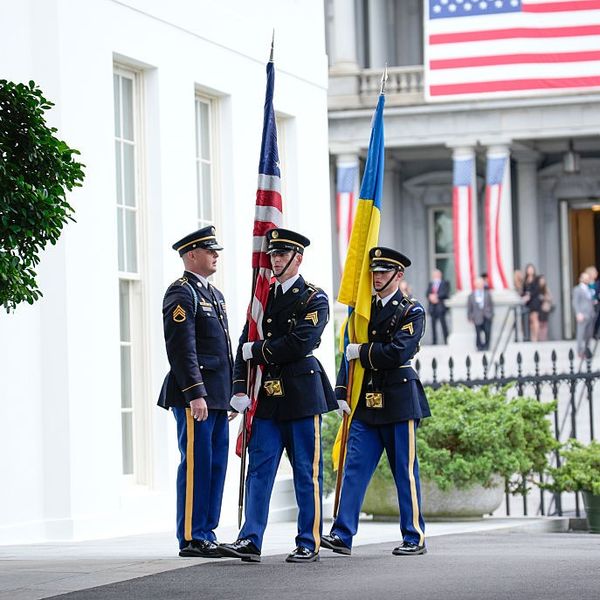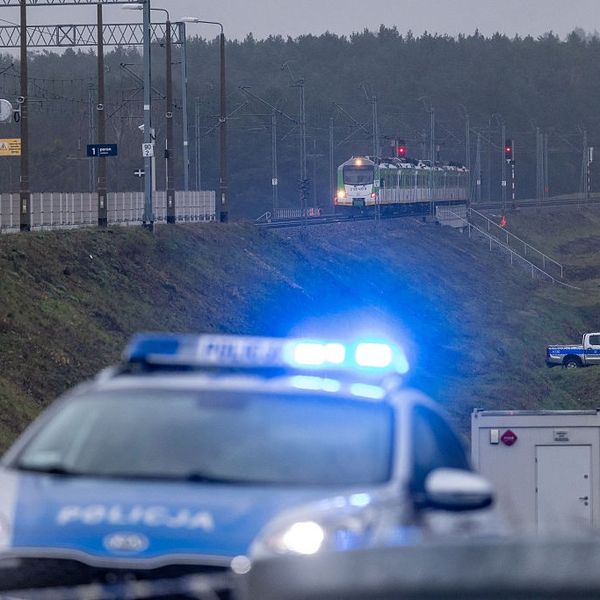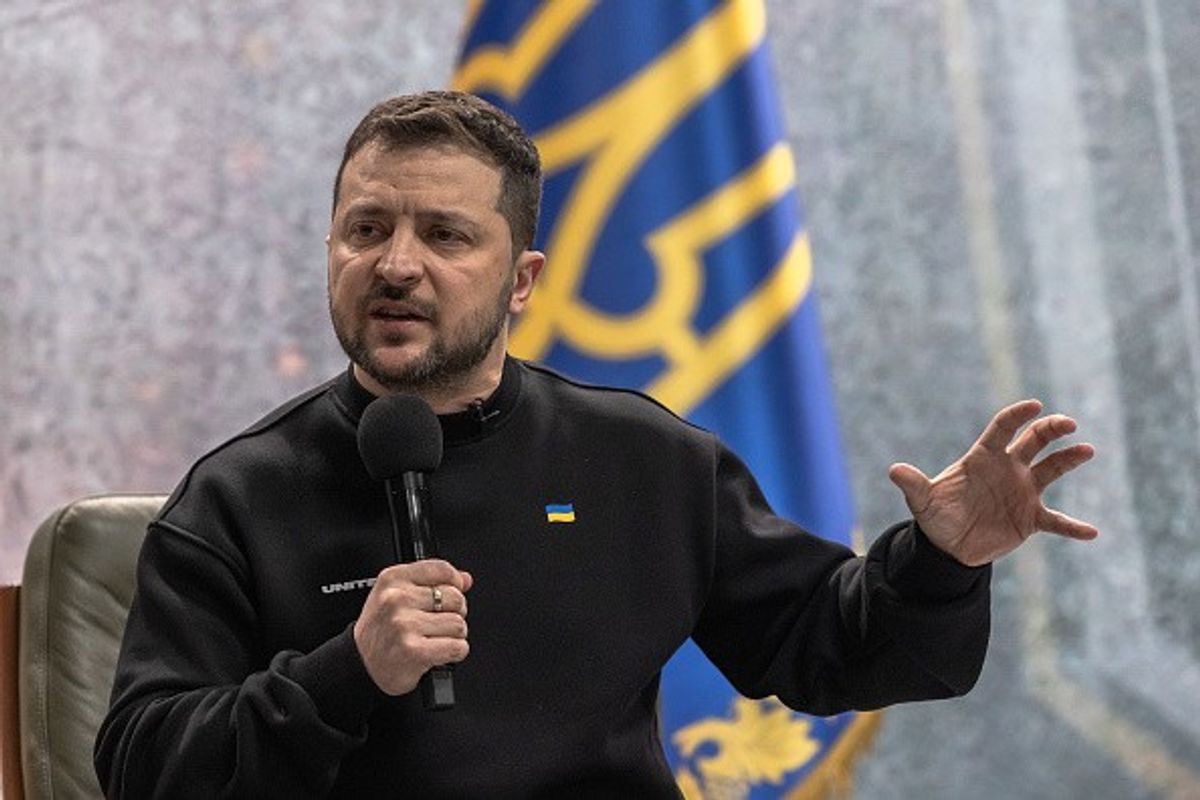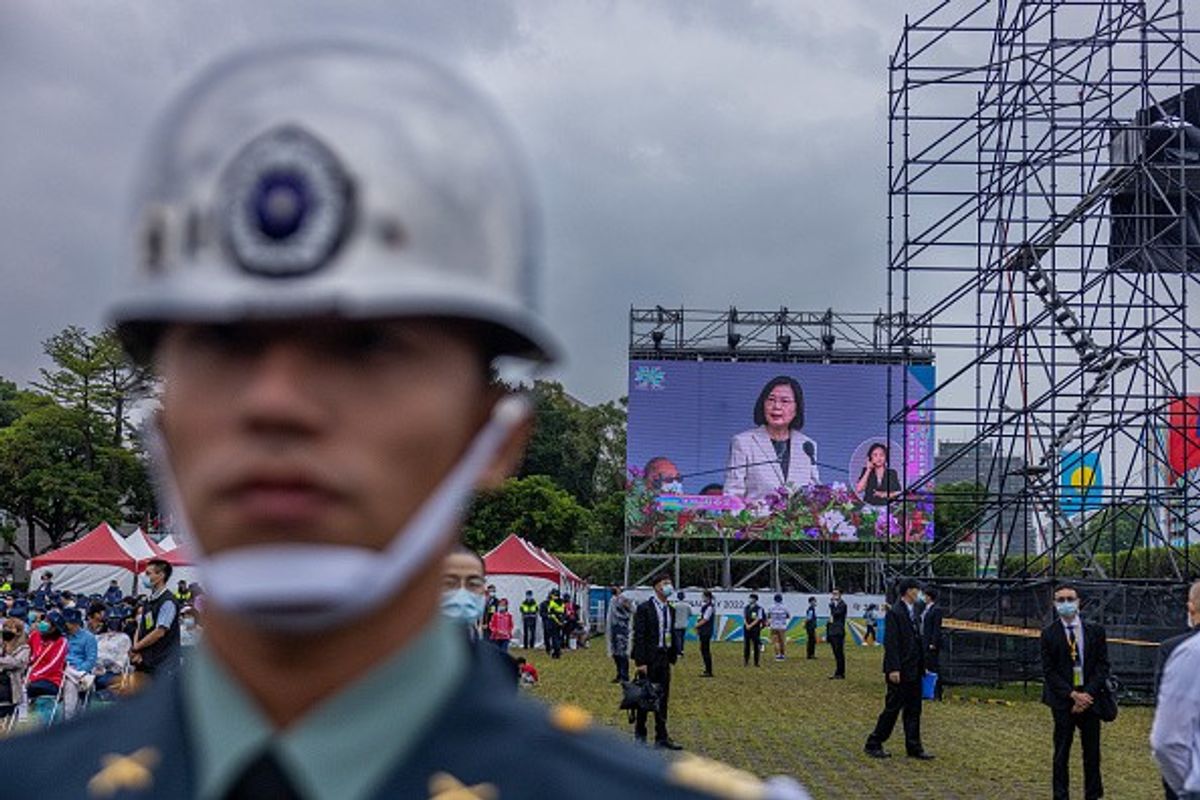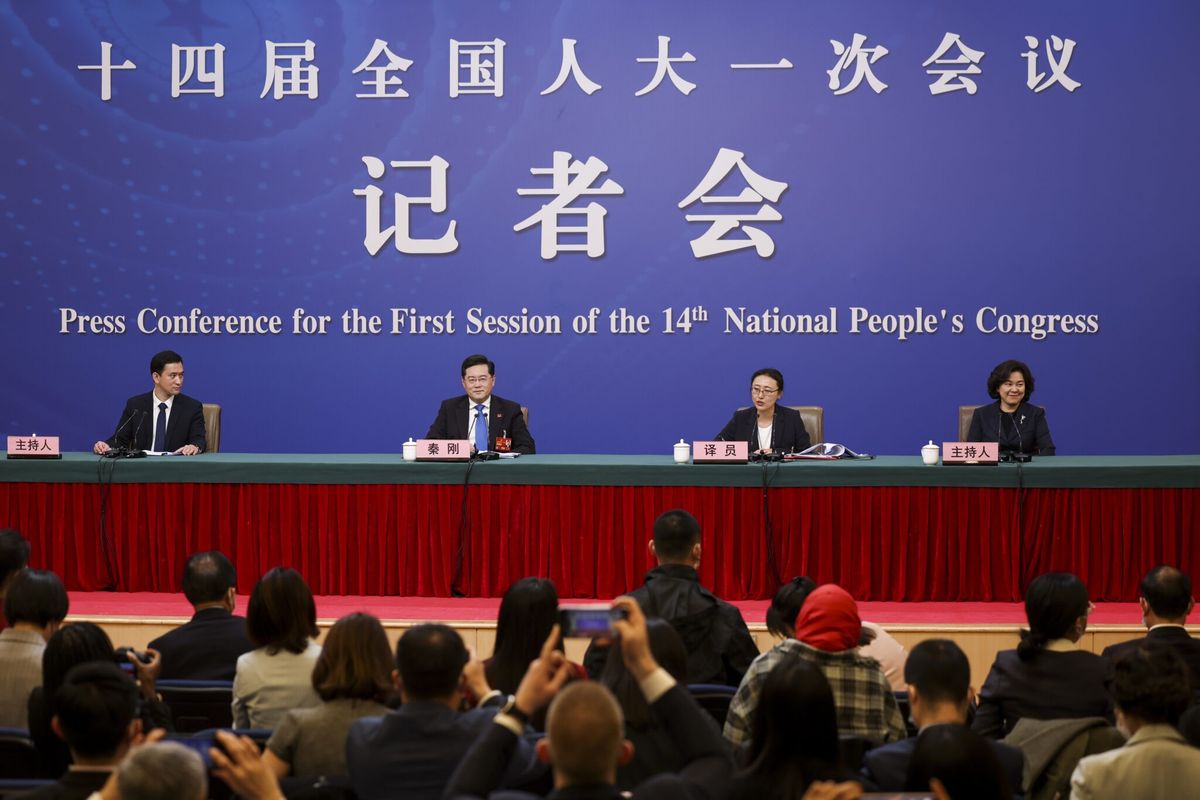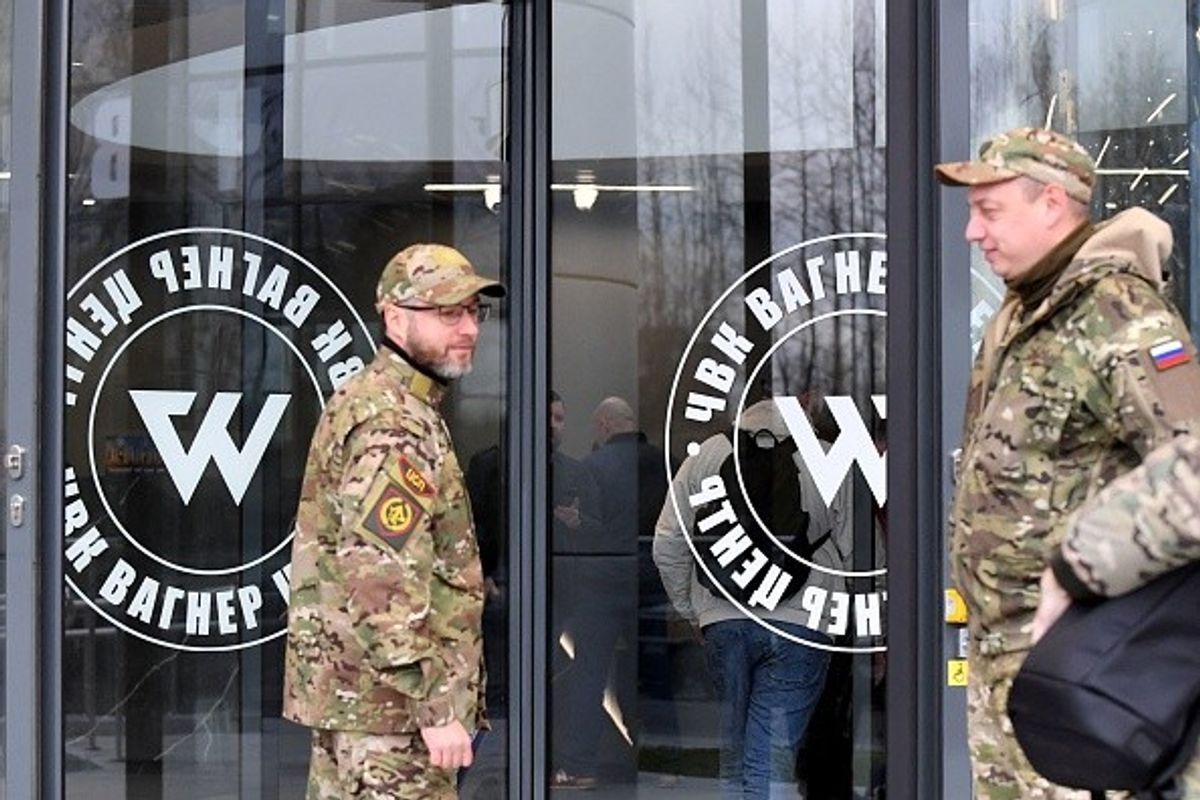As critical as it is to discern Russia’s next battlefield moves, there are longer term implications for the United States and NATO stemming from their robust support of Ukraine. This is one of the key conclusions drawn by Joshua Huminski, director of the Mike Rogers Center for Intelligence and Global Affairs at the Center for the Study of the Presidency & Congress (CSPC).
The Cipher Brief recently interviewed Huminski on the transfer of Western arms to Ukraine. Huminski sees in the West’s transfer of ever-more potent weapons, a calculation that current deliveries are “setting the long-term groundwork” for a Ukraine that will be capable of standing up to Russian aggression on its own.
This interview has been lightly edited for length and clarity.
EXPERT Q&A
The Cipher Brief: How do you assess the impact of U.S. and German decisions to send main battle tanks to Ukraine?
Huminski: The United States’ provision of Abrams, the United Kingdom’s dispatching of Challenger 2 tanks to Ukraine, and Germany’s agreement to “free the Leopards” marks another increase in the West’s commitment to Kyiv. It's important to note that this is not the first time NATO has provided tanks to Ukraine. It does, however, mark the first time that the West is providing its advanced main battle tanks. It's increasingly clear that the obstacles originally put forward—the complexity of maintenance and availability (of the Abrams) - were merely stalking horses for the West’s political hesitance to send the tanks forward.
Ukraine has demonstrated a remarkable ability to manage multiple supply chains and logistics lines, as maintenance programs. The Abrams, Challengers, and Leopards (all of which will arrive along different timelines, with the Abrams likely taking longer according to reports) will necessitate an increase and expansion of this logistics tail, but there is little to suspect that Ukraine won’t be able to do so. The same applies for the operation of the tanks, which will take several weeks’ training to achieve basic proficiency.
The real challenge (and more important goal) is the development of a true combined arms capability on the part of the Ukrainians—the integration of infantry, armored vehicles, main battle tanks, with artillery and air support. In many ways, while the tanks are receiving the bulk of the attention, it is the other support—infantry fighting vehicles, precision guided munitions, etc…—that is of greater and more immediate utility to the Ukrainians.
The addition of the tanks comes ahead of the anticipated spring offensives by both the Russians and the Ukrainians. In the case of the former, Moscow’s forces are digging in and fortifying their positions—against which the tanks and combined arms of Ukraine will prove invaluable, but not a panacea. The Ukrainians will find offensive operations against these lines challenging as many of their previous advances, while laudable, were against thinly manned lines.
Russia has yet to deploy the bulk of the forces mobilized at the end of 2022, and looks to do so to fortify its defensive positions, relieve pressured other (including Wagner) forces, and stave off anticipated Ukrainian operations. The Russian forces are limited at this time and will likely be unable to support multiple offensives while fixing Ukrainian forces in place at other locations on the front.
The delta between the West’s continued delivery of tanks and advanced weapons, and Russia’s mobilization and rearmament is where the next phase of the conflict will be decided. It is a question of the mobilization of Russian personnel and limited rearmament versus the provision of Western weapons to an increasingly exhausted and strained Ukrainian forces. While it is almost certain that Russian cannot win the war based on Moscow’s most ambitious objectives at the opening of the conflict, the Kremlin is likely aiming to degrade Ukraine’s infrastructure and outlast Western political resolve.
In the longer-term, there is speculation that Ukraine is hoping that the formation of combined arms units centered on the main battle tanks will allow its forces to break through Russian lines and sever the land corridor to Crimea. The West will need to continue, and increase, its considerations as to what comes next and how it plans to manage this next phase of the war. While it may not be politically popular or palatable to suggest that the West has agency or a hand in how the war continues, it absolutely does and must remain actively engaged in its course. Kyiv has been notably successful in managing the West, and mobilizing popular support to drive military and political decisions.
Ukraine is, of course, incentivized to abide by the West’s strictures and has largely done so, but as the war progresses and should the offensives gain momentum, the relationship and dynamic could become more complicated, particularly if the risks of escalation rise.
The Cipher Brief: The U.S. reportedly will send the Patriot missile defense system and other weapons that will improve and extend Ukraine’s strike options and range. What is the battlefield impact of these technologies, and what risks are inherent in such transfers?
Huminski: At a top level, this latest batch of weapons transfers reflects an increasing comfort with the level of aid to Ukraine. As the aid has increased and not, as of yet, provoked a significant escalatory response from Moscow, the West expanded the type and capabilities of weapons transferred to Kyiv.
There is a risk that the West gets too comfortable and assumes that just because Russia has not responded or escalated that it cannot or will not. While most attention on escalation has focused on Moscow’s nuclear capabilities, there are other, non-nuclear ways in which Russia could escalate at sea, in space, and in the cyber domains, as well as via conventional means. For example, it could in theory, deploy conscripts to the occupied and annexed territories as now, under Russian law, these are Russian lands.
This is not to argue or suggest that the aid be circumscribed, but that continued caution is exercised, particularly as the range and capabilities of the systems provided increase. The United States and NATO could impose limits on the range of some weapons systems and preclude Ukraine from using them in specific manners to control for this risk, as well.
The Patriots and other more advanced systems won’t have an immediate impact as their deployment is some months off given the training required for the operation of these systems, and given their limited numbers. The introduction of more advanced systems frees up other Ukrainian assets to press the offensive. For example, Patriot batteries defending Kyiv and critical infrastructure would free up other more mobile air defense assets to support frontline offensive operations. Longer-range artillery will provide Ukraine with much deeper offensive reach into Russia’s rear areas (potentially within Russia itself) targeted supply depots and staging areas, but could well risk the aforementioned escalation, which is why the U.S. has balked at sending ATACMs thus far.
NATO and the United States are, in effect, laying the long-term groundwork for a Ukraine that can defend itself with a view to, eventually, deterring Russian aggression. This latter objective is a much longer-term goal, but the West is slowly creating a force that is familiar with and operationally experienced in using NATO-standard equipment. NATO’s aid to Ukraine could, effectively, be interpreted as accelerating the development of a NATO-standard military at a wartime pace.
Cipher Brief Subscriber+Members enjoy unlimited access to Cipher Brief content, including analysis with experts, private virtual briefings with experts, the M-F Open Source Report and the weekly Dead Drop - an insider look at the latest gossip in the national security space. It pays to be a Subscriber+Member. Upgrade your access today.
The Cipher Brief: Media reports have suggested Russia is preparing for an early 2023 offensive involving heavy weaponry and intensified troop mobilizations. How might Western allies help Ukraine counter such moves with additional weapons and support?
Huminski: Russia has not yet deployed the full complement of troops mobilized in 2022 and, if as Western and Ukrainian intelligence believes, Moscow will start to push these troops to the frontlines in the weeks ahead. These troops will likely be better (a marginal definition) trained and equipped than those rushed to the frontline. These will not, however, likely be shock troops capable of significant offensive or combined operations (of which Moscow has shown little effectiveness). They will certainly be able to hold the lines the Russians have dug and may be able to conduct limited offensives.
Russia’s strategy, at the moment, appears to be one of maximalist damage—degrade Ukraine’s infrastructure and bleed its forces as much as possible. The former increases pressure on the latter, and while the Western public doesn’t have full visibility (if any) into Ukraine’s casualties, estimates and speculation suggest these are just as high as Russian losses. It would also be a mistake to assume that Russian forces are not learning from their poor early battlefield performance. They are and will continue to do so, which presents a parallel challenge of arming and equipping Ukraine ahead of Russian battlefield improvement and institutional learning.
For the West, this means continued and increasing training of Ukrainian troops as the UK has recently announced, and the sustained and public commitment to provide Kyiv with aid and material. This is immeasurably valuable in a qualitative manner, but also in a morale-boosting way for Ukraine’s forces (and concomitantly, if more limited, detrimental to Russian forces). In the immediate term, delivering infantry fighting vehicles like the Bradley and Strykers, self-propelled howitzers, and other rapidly deployable and immediately available systems, as well as meeting infantry requirements will help strengthen Ukraine’s position ahead of the anticipated offensive.
Systems like the Patriot and the Leopard/Challenger 2 tanks will have a longer-term effect, but their limited numbers at the outset and delay on arrival will limit their efficacy in the face of any Russian spring offensives.
This war will not end any time soon and it’s important that the West settles in for a much longer conflict.
The Cipher Brief: What is the logistics and training “tail” of sophisticated military tech transfers, and is U.S. or NATO military readiness degraded to any significant degree by drawing down stockpiles?
Huminski: There is some irony in the fact that prior to the war in Ukraine, the long pole in the tent was not seen as military armaments, but political will. Today, it seems that the shortage (save for Germany’s obstinacy) is not in political will, but in armaments inventory.
The logistics and training tail of these advanced systems is significant, but so too are the tails for basic artillery shells. Right now, Ukraine’s forces, but also Russian forces, are burning through artillery shells and other munitions at a rate that exceeds production. In the case of the latter, that is why Moscow is turning to Iran, but also if reports are correct, North Korea. Moscow used higher rates of fire to offset numerical personnel disadvantages, but now finds itself in a position where its stocks are lower, but personnel numbers may be increasing.
For Ukraine, the more advanced systems are some months off from deployment and will require greater and more complex maintenance and supply chains than other platforms. The argument in favor of providing Leopard tanks in lieu of the M1 Abrams is the complexity of maintaining and operating the latter, and the availability and comparable ease of the former. Indeed, Kyiv is fielding a “franken-force” of sorts with multiple overlapping supply and maintenance chains. That Kyiv has managed to perform as well as it has with the diversity of both Warsaw Pact-era and NATO-standard systems is impressive.
This support has, however, drawn down on existing stockpiles and Western supply chains have not had an attendant acceleration in production. It is important to state, up front, that the cupboard is not bare. War reserves and other inventories do and will remain.
This is not the first time that current operations have run short of or nearly out of specific types of munitions—this was certainly the case in the fight against the Islamic State in Syria and Iraq. If the supply chains aren’t restarted or expanded (and if Western governments do not provide the necessary demand signals), the pressure on NATO operational training tempo could, for example, increase, and should another theatre erupt in conflict, there could be additional challenges and strains.
It also represents an opportunity to refine NATO force planning and armament design. While a longer-term prospect, investing in proven next generation systems, proven on the battlefields of Ukraine, would put NATO in a far better position for the future.
The Cipher Brief: Monitoring tech transfers to ensure only intended recipients receive them is an ongoing requirement. How are Western allies handling this task, and how can “leakage” of military supplies to the black market be prevented?
Huminski: Is there a risk of leakage? Certainly. Concern about these arms transfers absolutely must be part of the calculus of what weapons are sent forward and how they are used. Yet, in the main, the risk of weapons leakage is outweighed by the need to get weapons into the hands of Ukrainians fighting the Russians. For the West, it is about demonstrating political will in the face of naked aggression, and sustaining the Western international law-based order. For Ukraine, these weapons are battlefield tools, not something to flip for quick profit, and should this be discovered, it could well jeopardize Western aid to Kyiv.
On-the-ground monitoring and verification is a critical task, and it’s important to remember that the United States has ways of verifying the physical transfers of these systems. This activity is, while not directly analogous (and carried out under different authorities), a foreign military sales program on steroids—transferring advanced weapons to an ally, albeit under wartime conditions.
For more advanced systems, the United States can, and almost certainly is not providing the top-of-the-line systems, but stepped-down systems for foreign markets. Even America’s allies don’t get the latest and greatest. Ukraine isn’t getting the Ferrari, but it isn’t getting a Honda Civic, either. Judging by the battlefield performance of Western weapons, even the stepped-down systems are likely well above and beyond comparable Russian systems.
The Cipher Brief: Non-government technology suppliers, such as the Starlink Internet network and various drone manufacturers, are having an impact on the battlefield, especially when adapted by Ukrainian forces to innovative purposes on the battlefield. How important are private sector transfers as a complement to what Western militaries provide? Are there any drawbacks?
Huminski: The war in Ukraine is proving to be a truly whole-of country conflict for Kyiv. From crowd-sourcing drones to organizing hacking campaigns and to the well-executed information war, Ukraine has mobilized not just its own citizens, but a global cadre of sympathetic actors. This is seen, perhaps most visibly in the well-curated stories from Ukraine about its soldiers jury-rigging commercial off-the-shelf drones to attack and harass Russian troops.
The extent of this crowd-funding ad crowd-sourcing of modern warfare is largely novel. There are few comparable examples of the size and scope of this effort. This open source architecture of military support is lending itself to rapid innovation, something the Ukrainians have demonstrated quite effectively via social media.
Yet, it is important to recognize the limits of this support. “Go-Fund-Me-ing” a Bayraktar TB2 combat drone is impressive as Lithuanians have done, but it is one piece of a much larger and effective constellation of military acquisition and support provided by NATO and the West. Private support is unlikely to reach the level where it is a challenge to Western aid, but more actors does present additional challenges.
Starlink is a much different level of support and is indicative of the complexity of the modern battlefield. Is SpaceX now a party to the conflict? What happens if Russia kinetically targets one of the Starlink satellites to send a signal, launches a cyber-attack the network itself? This is not a challenge limited to Ukraine, but represents the broader question of commercial actors being party to a modern war.
Read more expert-driven national security insight, perspective and analysis in The Cipher Brief



